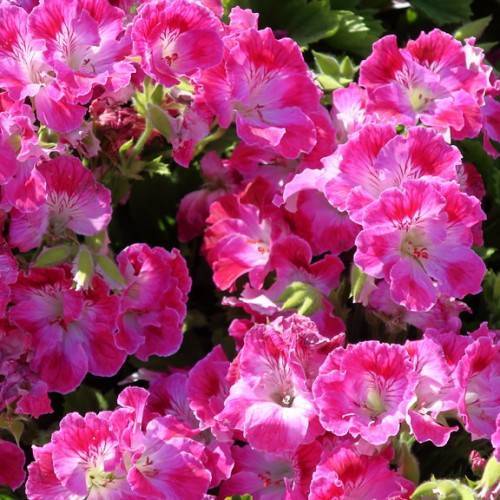
pelargonium
Pelargonium x domesticum
Also Known As - regal geraniumCycle:
Annual
Watering:
Average
Hardiness Zone:
10
Flowers:
Flowers In Summer
Sun:
full sun,part sun/part shade
Soil:
Well-drained
Fruits:
Fruits In Autumn Ready In Summer
Leaf:
Yes
Growth Rate:
High
Maintenance:
Moderate
Indoors:
Yes
Care Level:
Medium
watering
Zonal geraniums should be watered thoroughly once a week, effectively soaking the soil to about 6-8 inches deep. During the summer or during periods of drought, you should water them more often. During the cooler months, reduce the amount of water you give to the plants to avoid root rot.
sunlight
Zonal geraniums require a minimum of 6 hours of direct sunlight per day. However, they will be happiest with 6 to 8 hours of direct sunlight, as this will help to promote larger, more lush foliage and more vibrant, beautiful flowers. If grown in too much shade, zonal geraniums will become spindly and pale-flowering, and they are likely to suffer from nutrient deficiencies. In warmer climates, zonal geraniums should be provided with some afternoon shade to prevent browning or wilting due to excessive heat.
pruning
Zonal geraniums require frequent pruning in order to keep them healthy and looking their best. Pruning should be done in the spring, right after the last frost. During spring pruning, stems should be trimmed down to about 4-6” and leaves should also be trimmed back for shape. Deadheading (removing finished blooms and buds) is also important year-round to keep the plant looking full and healthy. If the plant becomes overgrown, it can be cut back harder in the late summer, but beware that cutting too hard can reduce next year’s flowering potential.
